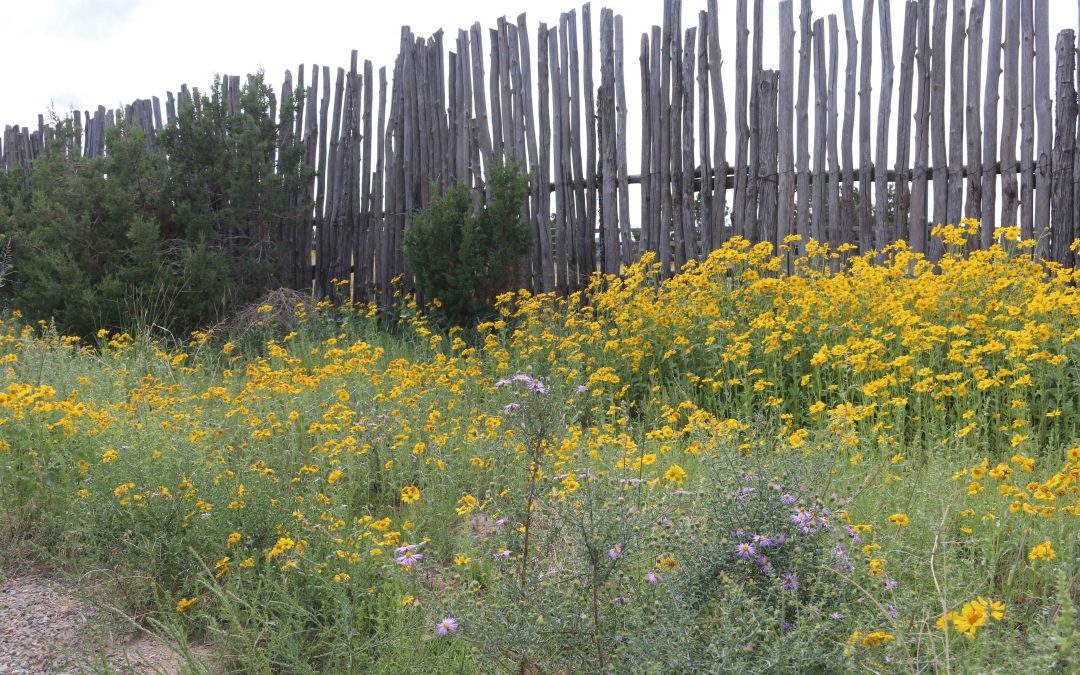One of the great advantages of desert-adapted plants is the wealth of colorful flowers they produce, a boon to gardeners and pollinators alike. Plants that bloom in autumn offer pollen and nectar for insects and, if the seed heads are left to ripen, a late season food source for birds.
After a long hot summer, some plants think the cool of fall means it’s spring again and burst into bloom with renewed vibrance. Salvia greggii is commonly called autumn sage because, even though it flowers brilliantly in spring and lightly all summer, fall brings on another strong show. Responding to the cooler, longer nights in autumn, Salvia’s late season color becomes even more intense. Autumn sage is a compact shrub that grows 2-feet tall and 3-feet wide, with small dark green leaves and spikes of flowers in red, rose pink, coral, purple or white. Hummingbirds and bees are frequent visitors. Autumn sage prefers well-drained soil and deep watering (24 to 30 inches) every week or two while blooming, monthly or less in winter.
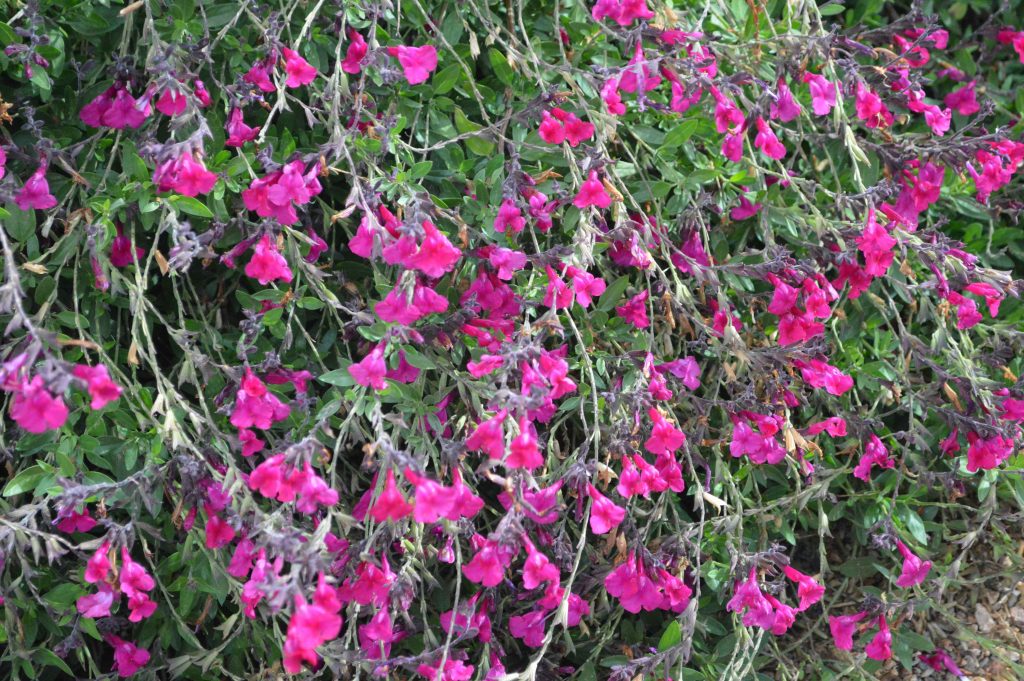
Many ornamental grasses are their showiest in autumn, too. There are several varieties of little bluestem Schizachryium scoparium with 12-inch wide clumps of narrow blue-green leaves and 24-inch tall slender stems bearing fuzzy seed heads. ‘Blaze’ little bluestem turns scarlet in fall and ‘The Blues’ turns a beautiful pink. Both keep their color into winter when they fade to a rich bronzy brown. The color is our reward for supplying the little extra water these grasses need.
Native grasses are also important larval food for butterflies and produce nutritious seeds for songbirds, bringing color on wings to the garden. Since the seed heads are a large part of the reason they are planted, ornamental grasses should be left uncut until early spring. Then, trim them a few inches from the ground so the new growth is not stymied by having to push through old stubble to reach sunlight.
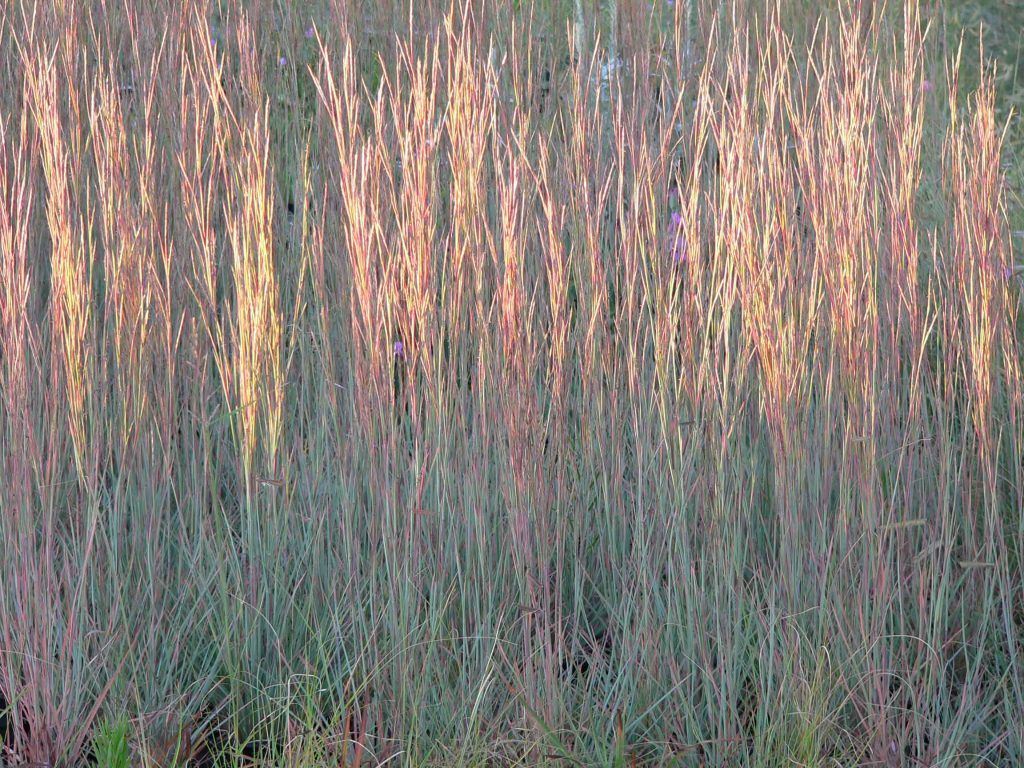
Perhaps the most spectacular late blooming perennial is the Maximilian sunflower Helianthus maximiliani. By early autumn, its flower stems are 5 to 7-feet tall. Established plants can spread 4 or more feet wide, shooting up dozens of flower stems. The top few feet of the stems are covered in 2-inch wide yellow sunflowers with yellow centers abuzz with bees. The show can last for several weeks in September or October, but after the flowers fade the plants become a bird buffet of seeds well into winter. Maximilian sunflowers grow best in soils that hold water well and produce the best show when watered to a depth of 2 feet weekly during the growing season, every two weeks in spring and fall and monthly or less in winter.
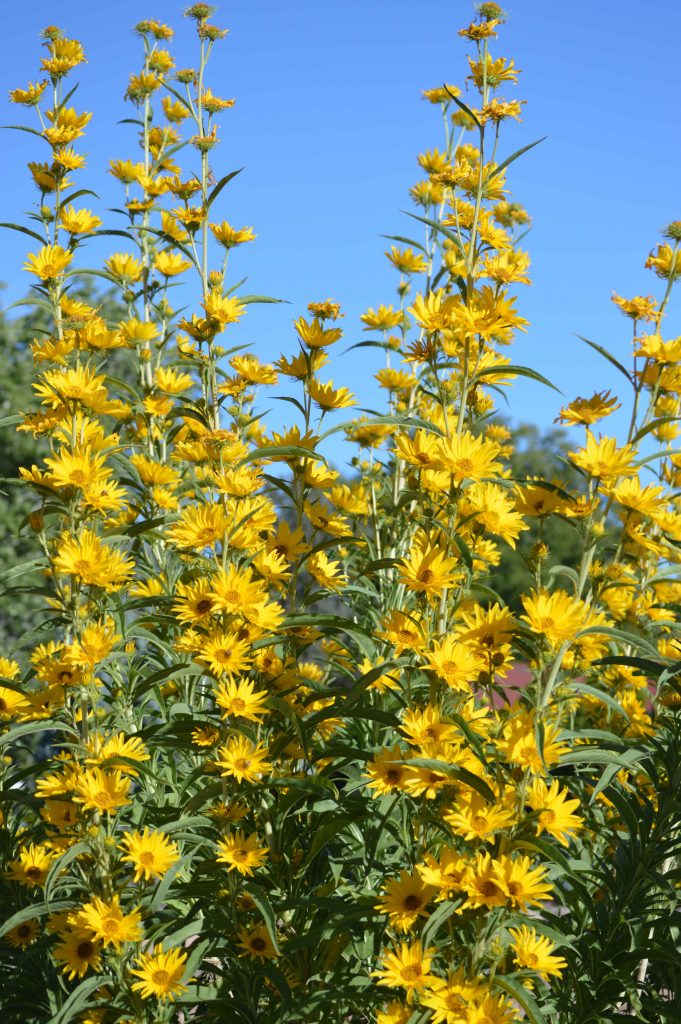
Flowers aren’t the only source of fall color, either, but red leaves in fall are not the norm in New Mexico. Cottonwoods in the Bosque and aspens in the mountains are our autumn gold. Chinese pistache Pistacia chinensis has become one of the most dependable heat and drought tolerant shade trees and adds splashes of red fall foliage in the ABQ metro area. A great shade tree that is 20 to 30-feet tall at maturity with a canopy spread of 20-feet, Chinese pistache benefits from structural pruning while it is young to assure strong branching. Once well rooted, it should be watered at the edge of the branch canopy to a depth of 2 to 3 feet every few weeks during the growing season and monthly or less depending on winter moisture.
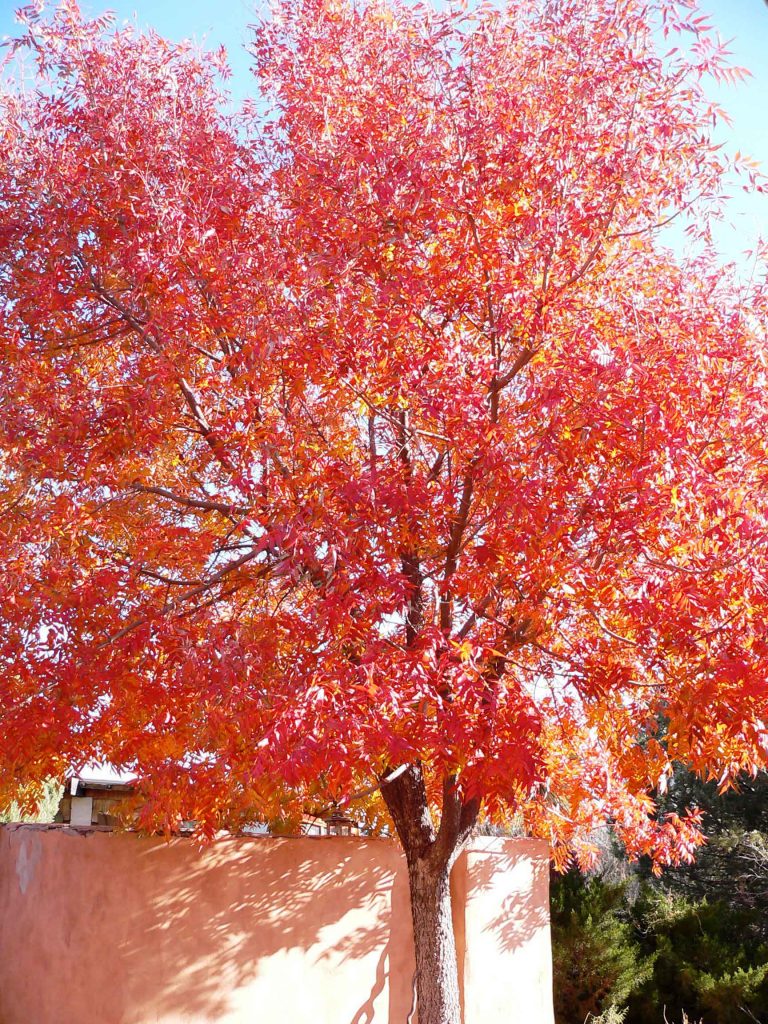

Author: Judith Phillips, owner of Design Oasis, landscape designer and garden writer with 30 years experience designing arid-adapted and native gardens in the high desert.

